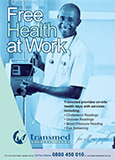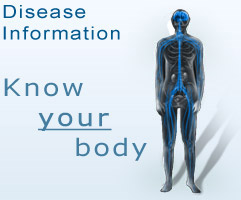Gynaecomastia
What is gynaecomastia?
Gynaecomastia is the swelling of the breast tissue in males, caused by an imbalance of the hormones oestrogen and testosterone. It may affect one or both your breasts, sometimes unevenly. Men and boys with gynaecomastia sometimes have pain in their breasts and may feel embarrassed. The condition may go away on its own. If it persists, you may have to consult your general practitioner.
What causes gynaecomastia?
Hormonal changes
The hormones testosterone and oestrogen control the development and maintenance of sex characteristics in both men and women. Testosterone controls male traits, such as muscle mass and body hair. Oestrogen controls female traits, including the growth of breasts.
Most people think of oestrogen as an exclusively female hormone, but men also produce it - though normally in small quantities. However, male oestrogen levels that are too high or are out of balance with testosterone levels may cause gynaecomastia.
Newborn boys
Gynaecomastia may affect newborn boys because oestrogen passes through the placenta from the mother to the baby. This is temporary and will disappear a few weeks after the baby is born.
Puberty
Gynaecomastia caused by hormone changes during the ages of 10 to 16 (adolescence) is relatively common. In most cases, the swollen breast tissue will go away without treatment within six months to two years.
Older men
Gynaecomastia may also affect men between the ages of 50 and 80. As men grow older, they produce less testosterone.
Other causes may be:
- Medication
o anti-ulcer drugs or medication for heart disease
o highly active antiretroviral therapy (HAART), e.g. efavirenz (Stocrin®)
o anabolic steroids
- Illegal drugs, such as cannabis (marijuana)
- Alcohol abuse
- Patients with kidney failure or liver disease
- Genetic disorders, e.g. Klinefelter's syndrome
- Certain herbal soaps or lotions that contain lavender oil or tea-tree oil
What are the signs and symptoms of gynaecomastia?
You may feel the following:
- Swollen and tender breast
- Pain around the nipples
- Nipple discharge from one or both breasts
How is gynaecomastia diagnosed?
Your doctor will ask you about your family and medical history and will also carry out the following tests:
- A physical examination that may include careful evaluation of your breast tissue, abdomen and genitals.
- Blood tests to determine the cause of the gynaecomastia.
- Any further tests depending on your initial test results.
Treatment of gynaecomastia
Gynaecomastia often goes away without treatment in less than two years. However, treatment may be necessary if the condition doesn't improve on its own, or if it causes significant pain, tenderness or embarrassment.
Some men and boys have fat on their chests that makes it look like they have breasts. This is known as ‘false' gynaecomastia and is helped by losing weight.
If you're taking medication that can cause gynaecomastia, your doctor may recommend stopping the medication or substituting it with another medication.
In adolescents with no apparent cause of gynaecomastia, the doctor may recommend periodic re-evaluation every six months to see if the condition improves on its own.
Based on the results of the tests done, your doctor may prescribe medication or, with the consultation of a qualified plastic surgeon, recommend breast reduction therapy.
Lifestyle management
Important factors to consider in reducing the risk of gynaecomastia:
- Avoid using illegal drugs. These include steroids and androgens, amphetamines, heroin and marijuana.
- Avoid alcohol consumption. Don't drink alcohol at all, or drink it in moderation.
- Know which medication you are taking and what they are for. If you're taking medication known to cause gynaecomastia, ask your doctor for other options.
References
1. http://www.mayoclinic.com/
2. http://www.nlm.nih.gov/medlineplus/
 TransmedBanner4.jpg)

